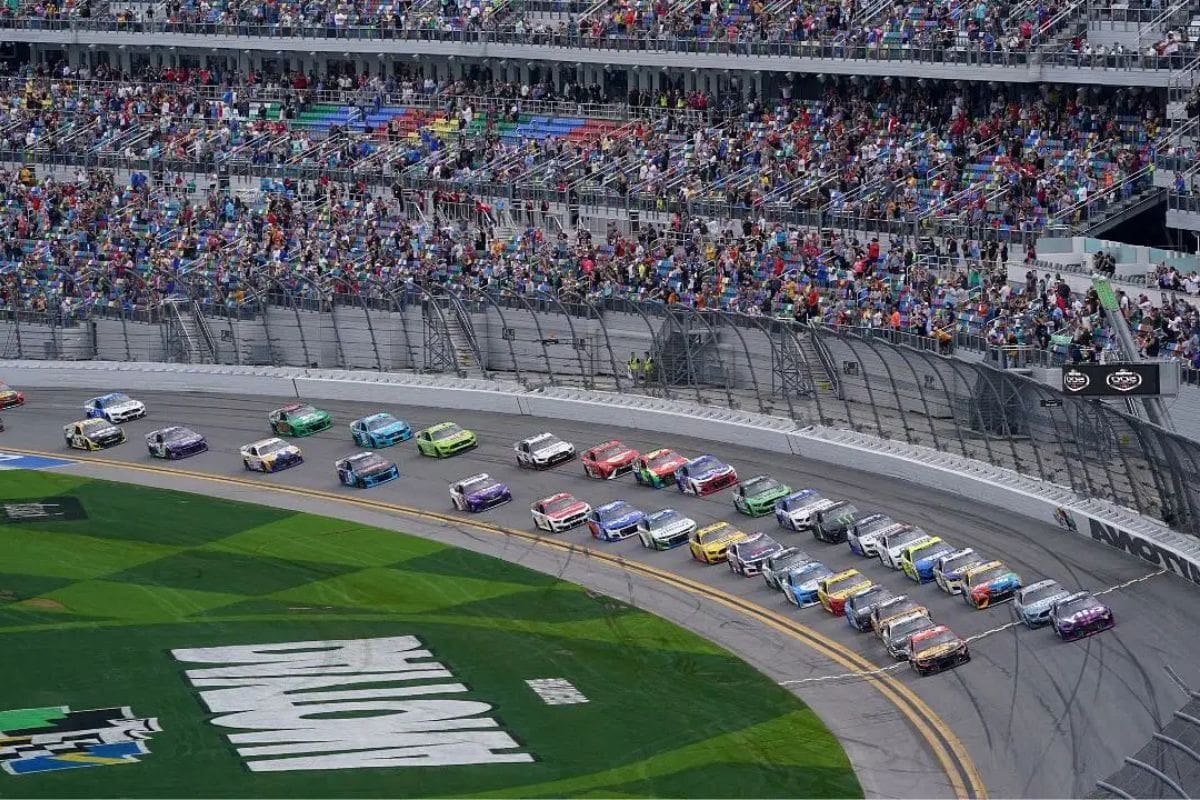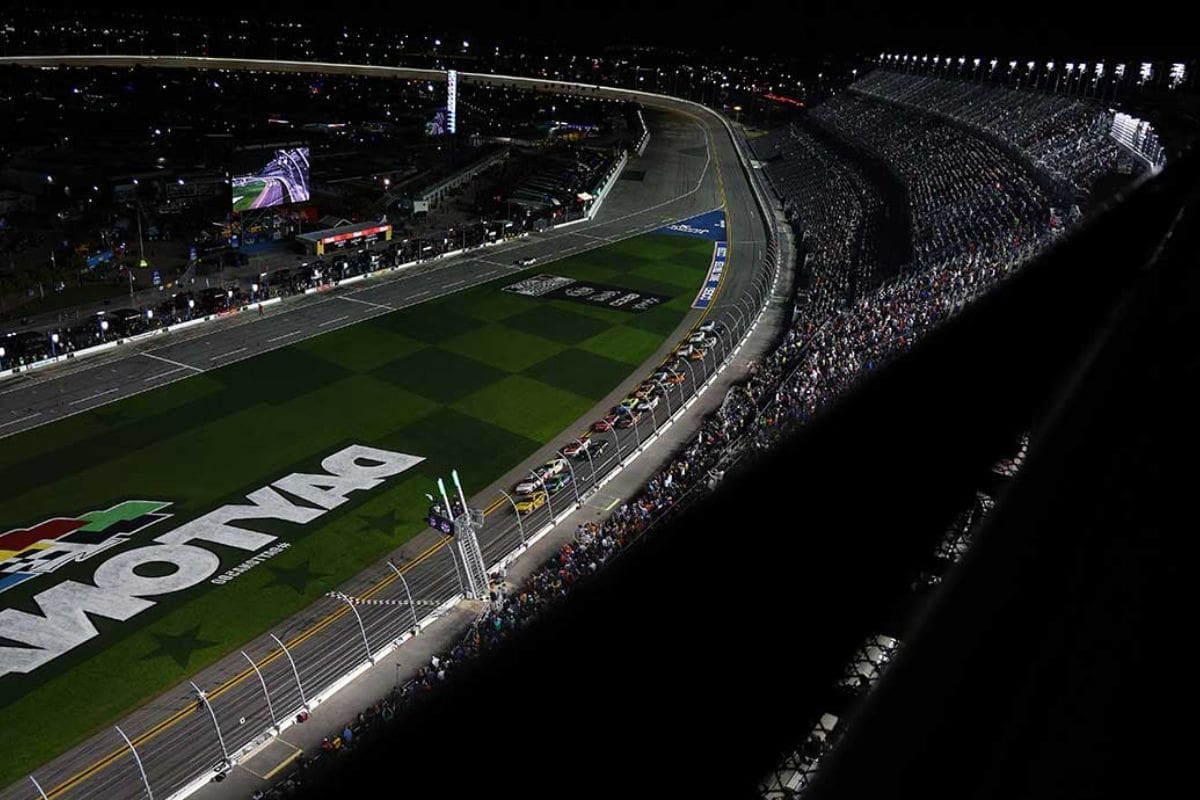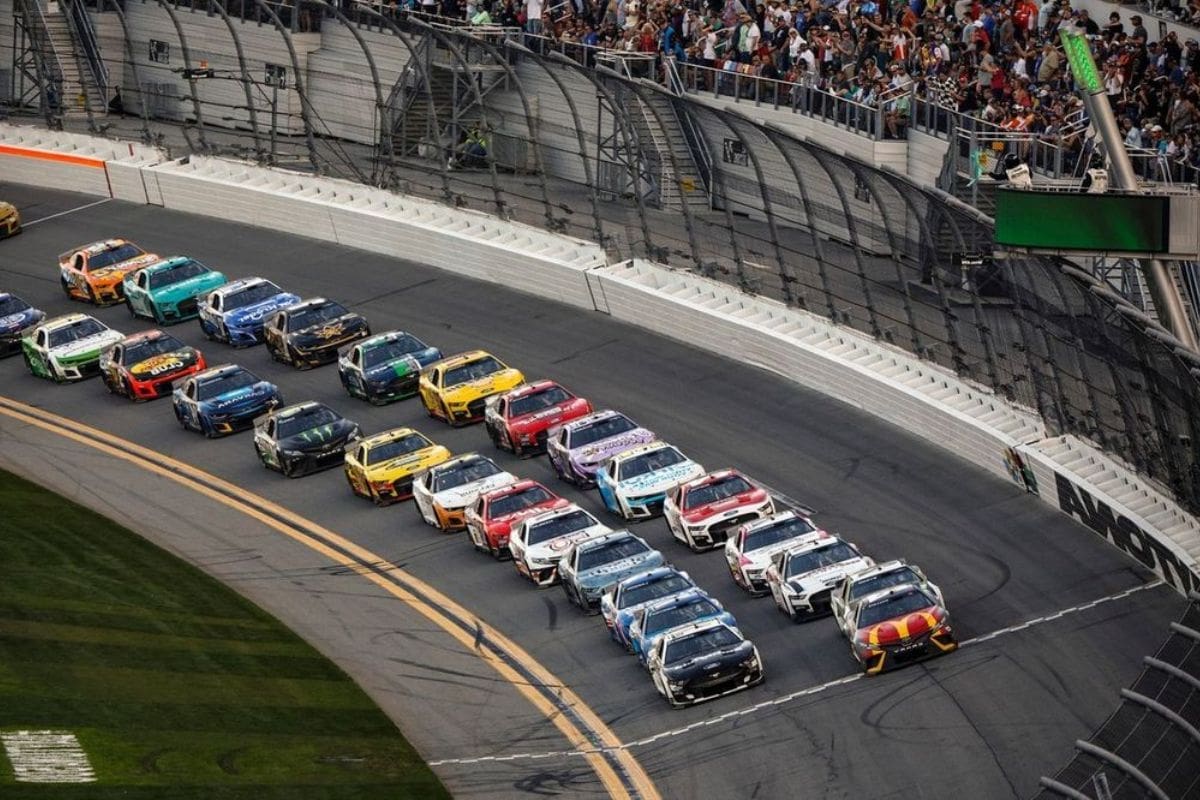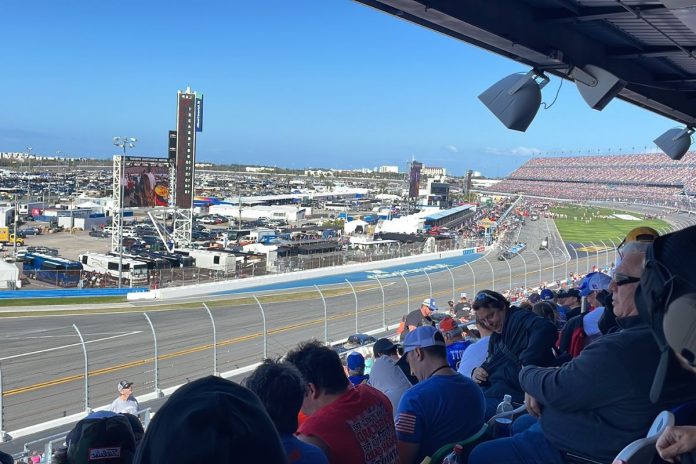2024 Daytona 500 Preview: As the anticipation builds for the 2024 Daytona 500, the stage is set for a season opener filled with uncertainty and intrigue.
With the introduction of the Next Gen car and a tighter field of competition, this year’s race promises to be a battleground where traditional powerhouses will clash with up-and-coming contenders.
As fans await the green flag to signal the start of the Great American Race, the question lingers: Will the established order prevail, or is the Daytona 500 poised for a new era of unpredictable outcomes and shifting dynamics on the track?
Key Takeaways
- Increased competitive parity leading to unpredictable races at Daytona 500.
- Next Gen car’s impact fostering closer racing and minimized dominance.
- Expectation of intense competition at the tri-oval with evolving dynamics.
- Anticipation for thrilling and engaging NASCAR races with evolving competitive landscape.
Introduction and Historical Context
In the realm of NASCAR, the landscape has undergone a significant transformation in recent years, marked by a notable increase in competitive parity among drivers, setting the stage for a thrilling 2024 Daytona 500. This shift has brought a new level of excitement and unpredictability to the races, with drivers facing a larger pool of competitors capable of challenging for victory.
Two-time champion Kyle Busch’s reflection on past expectations highlights this evolution, where the days of expecting only a handful of rivals have given way to facing 12 to 15 serious contenders in any race. The Daytona 500, as a premier superspeedway event, exemplifies this trend even more starkly, with nearly 30 drivers now considered legitimate threats for the win.
This heightened competition not only raises the stakes for drivers but also promises fans an exhilarating and suspenseful spectacle as they eagerly anticipate the unfolding drama of the 2024 Daytona 500.

Qualifying Session and Tighter Competition
Amidst the evolving landscape of NASCAR, the qualifying sessions for events like the Daytona 500 have become showcases of tighter competition, reflecting a trend towards increased parity among drivers. The recent Daytona 500 qualifying session exemplifies this shift, with pole-sitter Joey Logano holding a mere 0.869-second advantage over the 36th-fastest driver. This slim margin underscores the competitive nature of the field, hinting at a more level playing field compared to previous years.
The narrowing gap in qualifying times points towards a broader trend within NASCAR, where races have grown more unpredictable and exciting for fans. The increased competitiveness not only adds an element of suspense to the sport but also highlights the skill and precision required by drivers to secure favorable starting positions. As the sport continues to evolve, these tighter qualifying sessions serve as a testament to the enhanced parity among drivers, promising thrilling and unpredictable racing ahead in events like the Daytona 500.
Next Gen Car Impact on Parity
The impact of the Next Gen car in NASCAR has been pivotal in reshaping the competitive landscape by significantly enhancing parity among teams and drivers. This shift has brought about a more level playing field, fostering increased competition and unpredictability in race outcomes.
The following points highlight the key ways in which the Next Gen car has influenced parity in NASCAR:
- Standardized Parts: The Next Gen car standardizes parts across teams, reducing the ability for one team to gain a significant technological advantage over others.
- Tightly Packed Field: With the new car design, the field has become more tightly packed, leading to closer racing and a higher likelihood of different teams and drivers securing race victories.
- Reduced Dominance: The Next Gen car has minimized the dominance of a few powerhouse teams, allowing for a broader range of competitors to contend for wins and championships.

Changing Championship Landscape
The evolution of NASCAR’s championship landscape, propelled by the influence of the Next Gen car, showcases a remarkable trend towards increased diversity and competitiveness in crowning Cup champions. The Next Gen car’s impact on parity is evident in the changing dynamics of NASCAR championships. Over the last five seasons, there have been five different Cup champions, marking a historical first for the sport. This shift highlights a broader trend, with 10 different teams winning races last year compared to only eight teams winning races two decades ago.
To further illustrate the changing championship landscape, let’s take a look at the table below:
| Season | Number of Different Cup Champions | Number of Teams Winning Races |
|---|---|---|
| 2023 | 1 | 10 |
| 2022 | 1 | 9 |
| 2021 | 1 | 8 |
| 2020 | 1 | 7 |
These statistics underscore the increased competitiveness and diversity in NASCAR’s top-tier competition, setting the stage for an unpredictable and thrilling championship battle in the upcoming seasons.
Daytona 500 Expectations and Future Outlook
Anticipation builds as NASCAR’s top drivers prepare to navigate the high-speed challenges of the Daytona 500, setting the stage for a thrilling showcase of skill and strategy on the iconic tri-oval track.
- Intense Competition: Drivers are gearing up for fierce competition at Daytona, heightened by the unpredictable nature of pack racing at the tri-oval, where split-second decisions can make or break a race.
- Speed Differentials: Changes in car bodies for Toyota and Ford have raised concerns about potential speed differences, introducing an element of unpredictability that could shake up the race dynamics.
- Evolution of NASCAR: With drivers emphasizing the significance of minute details in such a closely contested field, the Daytona 500 underscores the ongoing evolution of NASCAR’s competitive landscape, showcasing the sport’s adaptability and the drivers’ ability to stay ahead of the curve.
The Daytona 500 promises an electrifying display of talent, strategy, and adaptability, making it a must-watch event for motorsport enthusiasts looking for edge-of-the-seat action.
Conclusion of 2024 Daytona 500 Preview
The 2024 Daytona 500 promises to deliver unpredictable and exciting racing as drivers compete in tighter competition with the new Next Gen car.
The impact on parity and the changing championship landscape add to the anticipation surrounding the event.
Fans can expect thrilling races and a shift in the dynamics of the sport, making the Daytona 500 a must-watch event for all racing enthusiasts.

Our Reader’s Queries
Q. Who is performing at the Daytona 500 in 2024?
A. The starting lineup for the Daytona 500 includes:
- #22 – Joey Logano
- #34 – Michael McDowell
- #45 – Tyler Reddick
- #20 – Christopher Bell
- #9 – Chase Elliott
- #2 – Austin Cindric
- #48 – Alex Bowman
- #11 – Denny Hamlin
Q. What time is green flag for Daytona 500?
A. The Daytona 500 is scheduled to start at 2:30 p.m. ET on Sunday. Racing fans can tune in to catch the excitement of this prestigious event.
Q. Where can I watch Daytona 500 for free?
A. For those looking to watch the Daytona 500 live, several streaming services provide coverage. Here are some options:
- Sling (offers a free trial)
- Hulu + Live TV
- YouTubeTV (offers a free trial)
- fuboTV (offers a free trial)
- AT&T Now
Q. Does Daytona 500 run in the rain?
A. The track requires a minimum of 90 minutes to dry, and any presence of rain will lead to the suspension of racing. Even a brief drizzle during Friday’s Truck race prompted a red flag. Given that the cars’ tires lack tread, NASCAR is anticipated to implement caution for any amount of rain. This precautionary measure ensures safety and optimal track conditions for competitive racing.
ALSO READ: Joey Logano Thrilling Pole Lap: 2024 Daytona 500 Qualifying!

